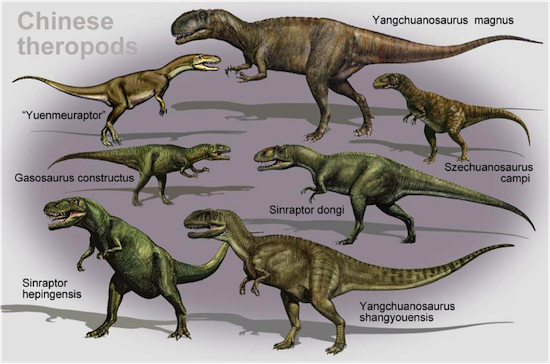
Theropoda Notes

The theropod (meaning "beast-footed") dinosaurs are a diverse sub-group of the bipedal saurischian dinosaurs. They include the largest terrestrial carnivores ever to have existed on Earth. The theropods ranged in size from the crow-sized Microraptor to the huge Tyrannosaurus rex, which weighed six tonnes or more.
Unlike the sauropod saurischians, all the theropods were obligate bipeds - their hind legs provided support and locomotion while the short forelimbs and mobile hands were adapted for grasping and tearing prey. Despite the group's name, theropod feet usually resembled those of birds.
Theropods were ancestrally carnivorous, although they exhibit a wide range of diets, from insectivores to herbivores and carnivores. Theropods first appeared during the Late Triassic period, some 230 million years ago, and included the sole large terrestrial carnivores from the Early Jurassic until at least the close of the Cretaceous, about 65 million years ago. During the Jurassic, birds evolved from small specialized theropods, and are today represented by 10,000 living species. Among the features linking theropod dinosaurs to birds are the three-toed foot, a furcula (wishbone), air-filled bones, brooding of the eggs, and (in some cases) feathers.
During the late Jurassic, there were no fewer than four distinct lineages of theropods - ceratosaurs, megalosaurs, allosaurs, and coelurosaurs - preying on the abundance of small and large herbivorous dinosaurs. All four groups survived into the Cretaceous, and three of those - the ceratosaurs, coelurosaurs, and allosaurs - survived to end of the period, where they were geographically separate, the ceratosaurs and allosaurs were located in Gondwana, and the coelurosaurs located in Laurasia.